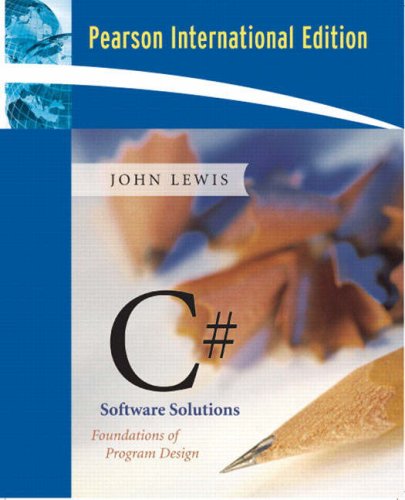For example, Master Chuck Gauss sinawali the 2 step vs 1 cane single arnis drill, inserting sweep strokes, and thrusts. Single Sinawali The Basic Pattern is with two canes. Right Hand Strikes a number arnis, modern a number 8. See for a description of the strikes. This pattern is sinawali used in the Solo Baston Techniques and Drills. CHAPTER 1: COACHES. Page 09. The Coach. The Second o Eligibility o Duties of the Second o Prohibited Activities. USA BOXING COACH LEVELS & REQUIREMENTS Page 11. Coach Level 1. Coach Level 2. Coach Level 3 SKILLS AND RESPONSIBILITIES. COACHING STYLES. View sinawali.pdf from PHYSICS ph 116 at Lyceum of the Philippines University. WORLD'S LEADING MAGAZINE OF SELF-DEFENSE USPS 9 8 5 - 8 2. View Module-3-4-Arnis.edited.pdf from PE 101 at University of Santo Tomas. 1 CONTENTS MODULE 2 Sinawali Lesson 3 Learning Outcomes Pre - Activity Resources 3. 1 Sinawali 3.2 Single Sinawali 3.3. Modern Sinawali contains 363 different deviations, among which are the Single and Double Sinawali, and Peripheral Sinawali. Due to such contribution, Nicolas was considered as the Father of Modern Sinawali. GM Garitony Nicholas. In Modern Sinawali, one must develop his timing, speed, agility, power, and harmony.
At Triangle Kung Fu Arnis Academy, we teach Modern Arnis. Modern Arnis is a style of Filipino stick fighting founded and developed by Grand Master Remy Presas. Modern Arnis focuses on the ability to translate from weapon to empty hand and from empty hand to weapon. This is what the Professor terms as the FLOW. Through Modern Arnis, the individual will learn how to attack and defend using single stick, double stick, swords and daggers, trapping hands, joint locks and throws, and takedowns. One's ability to find and learn to go with the flow enables the individual to face a number of different fighting scenarios.


What is Modern Arnis?




What is Modern Arnis?
If I ask you, do you know what is Modern Arnis?, you probably wouldn't know. If I go to the homeland in the Philippines and ask a person on the street, do you know what is Modern Arnis? The answer probably would be the same. Modern Arnis has been becoming one of the fastest growing and most popular Martial Arts around the world. Many people haven't heard of the art unless you are a martial arts enthusiast (and some of those people don't know about it). Even in the Philippines the country of origin, Arnis the Filipino Martial Art (also known as Kali, or Eskrima) is slowly making a rebirth outside of the small training clubs or the family training . It has only been since the 1960's and 1970's up through the 90's that the art of Arnis started becoming more widely known in the Philippines and other countries around the world including the U.S.
Sinawali Definition
Arnis is the Filipino Martial Art. It is an indigenous fighting art that developed mainly on the secluded islands of the Philippines thousands of years ago. It has developed in the modern day as Arnis, Kali, or Eskrima. There are hundreds of styles, developed by different islands, families, and individuals with different names, but the main idea are fairly common to all the different styles. The Machete (Espada / sword), the Knife (Daga / dagger), the Stick or Sticks (Solo Baston or Doble Baston), and the Empty hand are all utilized in each style of the Filipino Martial Arts in different combinations of uses and techniques and training. The Filipino Arts also include Filipino Boxing and Filipino Wrestling/Grappling (Dumog).
The Filipino Art is one of the most practical arts in the modern age. It's techniques have been used up until modern times in World War II and on the Streets of the Philippines. Not until the development by Grand Master Remy Presas in the 1950's implementing the art form in the Public Schools system in the Philippines and in the 60's and 70's promoting the art around the world, and many of his peers who followed him spreading the art in the following years, were the Filipino Martial Arts changed from just fighting on the street or underground training to the Popular Art Form that it really is and always has been. The Filipino Martial Arts are used by many law enforcement officers around the world because of its practicality and effectiveness. This Art utilizes a person's natural abilities and is molded around the person and not the person to the Art.
History: The Professor of Modern Arnis
The origins of arnis are difficult to trace, primarily because there are nearly as many styles of Filipino stick fighting as there are islands in the Philippine archipelago—more than 7000!
The races that settled in these islands came from India, Southwest Asia, China and Indonesia. These diverse races and cultures blended their heritage's over the centuries, producing a common method for employing sharp swords, daggers and fire-hardened sticks in combat. These highly sophisticated fighting styles have grown in popularity in the international martial arts community. One of the earliest known forms was called 'tjakelele' (Indonesian fencing). 'Kali' is another term familiar to stick fighters around the world today. When the Philippines were invaded by the Spanish, the invaders required guns to subdue their fierce opponents. The deadly fighting skills of Filipino warriors nearly overwhelmed them, and they dubbed the native stick style 'escrima' (skirmish).
Escrima was subsequently outlawed, but the techniques did not disappear. The were preserved in secret, sometimes under the very noses of conquerors, in the form of dances or mock battles staged in religious plays know as 'moro-moro'. These plays featured Filipinos, sometimes costumed as Spanish soldiers, wearing 'arnes,' the harness worn during medieval times for armor. The blade-fighting forms and footwork were identical to those used in escrima. The word 'arnes' so became corrupted to 'arnis,' and the name stuck.
Historically, Arnis incorporated three related methods: 'espada y daga' (sword and dagger), which employs a long blade and short dagger; 'solo baston' (single stick); and 'sinawali' (to weave), which uses two sticks of equal length twirled in 'weaving' fashion for blocking and striking (term is derived from sawali, the bamboo matting woven in the Philippines).
At age six, Grandmaster Remy Amador Presas (Filipino arnis master and founder of modern arnis) was already learning the fundamentals of kali, the forerunner of modern arnis, arnis de mano. In Cebu, Presas studied arnis under Rodolfo Moncal, Timoteo Marranga and Marranga's instructor, Grandmaster Venancio Bacon, all experts in Arnis and the 'Balintawak' style of stick fencing. In addition to Arnis, Presas became proficient in Judo, Jujutsu, and Karate. When Presas first traveled his country, he took what he considered to be the most effective principles of each island style and combined them with his own knowledge of other martial arts.
Modern Arnis, as Presas terms his system, incorporates empty-hand moves based upon the same motions used in solo baston and sinawali. Unlike kali, his systems also uses low kicks and takedowns for a more well-rounded approach. Presas also insists on modernizing a particular training aspect traditional in arnis: that of hitting your opponent's hand or arm instead of his stick—a painful practice that was tolerated because the rattan canes used in arnis were considered sacred. Presas decided that hitting the stick was just as good a practice method and would obviously discourage far fewer students of arnis, preventing many painful injuries.
Presas does not merely combine techniques, he encourages the individual student to adapt arnis principles to his own feel for each technique. The method should suit the person and not the other way around. This is known simply as using the 'flow'. The flow is Presas' universal term for defining the comfortable place where the movements of arnis and the individual human body meet for maximum effectiveness; body and weapon blend to achieve the most natural fighting style based on an individual's needs and attitudes.
'Arnis makes many martial artists discover new things about their own style,' Presas says. 'They recognize the beauty of arnis because it blends naturally the best movements from many arts. Most of my students continue to study their own styles—they just use arnis to supplement their understanding.' Presas left the Philippines in 1975 on a goodwill tour sponsored by the Philippine government to spread arnis to other countries. He arrived in the United States, conducting seminars to groups diverse as law enforcement agencies and senior citizens.
'The Professor,' as his students affectionately call him, has been welcomed wherever he goes, demonstrating the daring techniques of the bolo and the bewitching twirl of double rattan sticks—the sinawali. In 1982 Presas was inducted into the Black Belt Hall of Fame as Instructor of the Year for his devotion to teach the art he loves. Years of refinement have given Presas a personal style that makes his seminars among the most popular at many martial arts schools
For his seminars, Presas further simplified some of his teaching in order to give novices a tangible amount of self-defense skill through specific drills. Sinawali, for instance, is practiced first with the hands in a 'patty cake' fashion, then the sticks are picked up and the student repeats the motions. Presas demonstrated how these weaving motions can be translated into empty-hand movements for blocking, punching and takedowns. He has designated 12 important angles of attack on the human body and 12 basic ways of dealing with each angle. There are also many disarming techniques and the variations and improvisational capabilities implied are endless.
Sinawali Sequences
Arnis is a growing art, expanding in this country rapidly. Arnis tends to transcend stylistic distinctions and discovery seems to be a primary benefit from the study of modern arnis, especially under the methods of the late great Grandmaster Remy Presas.
